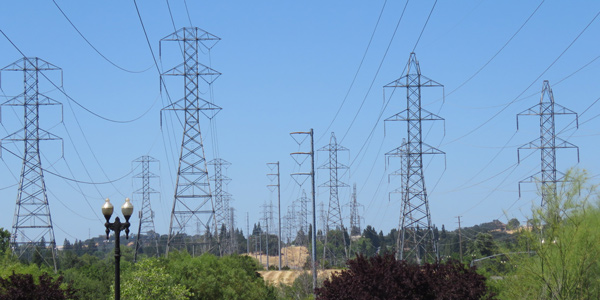By Jason Fordney
CAISO has dropped a proposal that would have allowed third-party transmission providers to participate in the Western Energy Imbalance Market (EIM) after getting negative feedback on the plan — but also said it might revisit the idea in the future.
The grid operator proposed that transmission owners outside the EIM be permitted to provide service between EIM balancing authority areas (BAAs) and receive congestion revenue for increasing the market’s transfer capability. But CAISO determined that the TOs would be decreasing their own potential for collecting congestion revenue by providing the increased capacity, resulting in inadequate compensation. In addition, the ISO cannot pay directly for transmission service.
“There were concerns that implementing this would outweigh the benefits,” CAISO Senior Policy Developer Megan Poage said in an Aug. 7 call. “Many parties were not sure this would be fully used.” But she asked for more comment, saying that CAISO wanted to ensure that all stakeholders were on board with removing the proposal. While the ISO said the plan could be revisited, EIM entities were generally uninterested in using the functionality.
The grid operator floated the third-party transmission idea as part of its Consolidated EIM Initiatives straw proposal being developed with market participants. The initiative also includes new wheeling policies and tools to manage bilateral schedule changes. (See Consolidated EIM Proposal Effort Gets Underway.)
Imbalance Risks
Regarding the management of bilateral schedule changes, CAISO is trying to address the fact that EIM participants are exposed to unknown imbalance settlement payments for making changes not reflected in their base schedules. Prior to the development of the EIM, firm transmission holders could make schedule changes without facing later settlement payments, CAISO said.
CAISO Senior Market Designer Don Tretheway said that a stakeholder workshop on intertie bidding unearthed concerns that, prior to the EIM, transmission holders could make schedule changes up to a certain point without being exposed to later settlement payments. He said that EIM participants through their transmission tariffs could manage the exposure, and part of it could be solved through the wheeling functionality.
Some EIM participants said that bilateral schedule changes should be subject to imbalance energy charges because they can cause the BAA to incur redispatch costs, CAISO said. However, most feedback on the proposal was neutral. Some stakeholders did say the proposal does not address fundamental issues about the inability to hedge imbalance settlement charges.
Sharing Benefits
The consolidated initiative also aims to correct an inequity that occurs when an EIM BAA wheels power between other BAAs. Wheel-throughs are on the increase as the EIM footprint expands, but wheeling entities only receive congestion revenue.
“The entity in the middle right now receives no direct financial benefit for facilitating a wheel” if there is no congestion, Poage said. But “without them being there, that transfer would not have occurred.”
The issue will become increasingly important when Powerex is integrated into the EIM in April 2018, with Puget Sound Energy positioned to wheel power from British Columbia to the south. (See Powerex Slated to Become First Non-US EIM Member.) Wheel-throughs could also start occurring in more than one BAA.
The benefit-sharing is seen as essential for some to recover costs of power flows caused by EIM dispatches, and preventing perceived price distortions and free riders. CAISO is also paying attention to cost-shifting between TOs and customers because of the loss of transmission revenues, but it said the issue will not be considered in this initiative. Others say that BAAs doing the wheeling share in other benefits and that the benefit-sharing might reduce incentive to invest in EIM-dispatchable resources. Stakeholders also expressed concerns over rate pancaking and reduced liquidity.
CAISO compiled data on EIM transfers and BAA imports and exports within the market, and asked for help in determining the net benefit of facilitating a wheel-through transaction to better quantify the benefits of the proposal. The grid operator said that net wheeling will increase as the EIM footprint expands.
For more equitable sharing of wheeling benefits, CAISO proposed either an after-the-fact payment based on the amount of net wheeling, or a market-based method that allows for competition.
As part of the Consolidated EIM Initiatives, CAISO proposed a series of new functionalities including automatically adjusting schedules of non-EIM entities to eliminate the need for physical dispatch instructions, which also facilitates management of changes to bilateral schedules.
The EIM Governing Body has primary authority for approving the changes because the market rules would not be proposed absent the existence of the EIM. The body is due to review the proposals Oct. 10, which then go before the ISO Board of Governors on Nov. 1. CAISO is taking comments until Aug. 17.





